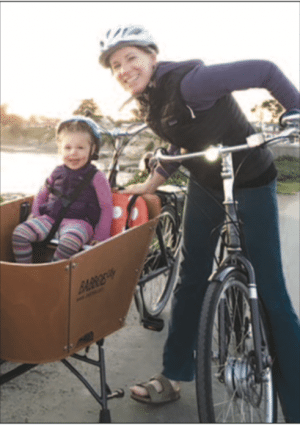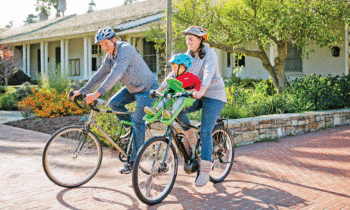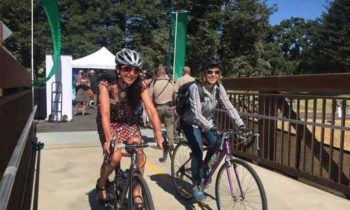March 2007
Her Sports Fitness
by Karen Kefauver
At the U.S.A. Cycling Mountain Bike National Championships held last summer in Sonoma County, Calif., a crowd of Spandex-clad women pedaled to the start of a two-hour event. But it wasn’t a race. They had come from across the country to attend a mountain bike clinic hosted by two of the biggest names in the sport: two-time national downhill champion Marla Streb and three-time national cross-country champion and former Olympian Alison Dunlap.
Here Streb and Dunlap share their tips for tackling a gnarly trail’s corners, ascents and descents with ease.
Cornering
Hit the brakes before the turn. “Corners are tough,” says Streb. “It’s natural to want to grab the brakes to help eliminate your fears, but don’t do it while you’re in the turn.”
The time to reduce your speed is when approaching the turn. Hitting the brakes during a turn can cause the tire to slip. Instead, gradually apply pressure to your brakes before the turn, while you’re still traveling in a straight line.
Weight the outside pedal. To stay balanced during a turn, place weight on the outside pedal. For example, when turning left, your right foot should be as close to the ground as possible, with your weight pushing down on the pedal to help stabilize the tire and maintain contact with the ground during the turn. Your left leg should be bent at the knee, with the pedal in its uppermost position.
Keep your head up. Your body will follow your gaze. As you approach a turn, keep your chin perpendicular to the ground rather than looking down. Having your head in this position helps maintain balance and also enables you to scan the trail ahead.
Up hill
Keep a straight line. As you approach a steep climb, pick a direct path to the top with the fewest obstacles. Once you start climbing the hill, keep your wheel pointed straight up towards the top rather than letting it veer left or right.
Sit forward on the seat. To battle gravity on the uphill, scoot forward on your seat so you’re sitting near the nose of the saddle. Moving your weight forward helps ground the front of the bike.
Lean forward. With your weight forward on the seat, angle your torso over the handlebars to attack the hill. Keep your elbows dropped down and your head low, but look toward the top of the hill. “All these elements help your traction going up steep ascents,” says Dunlap.
Descending
Look to the exit. “It’s an instinct to stare at what you don’t want to hit,” says Dunlap, “but that guarantees you’ll hit it.” Instead, focus on the “exit” — the point at which you end the descent and it levels off. Avoid staring at rocks, roots and ruts.
Don’t sit on your seat. On a descent, stand on your pedals and hover a few inches above or behind your saddle, with your legs bearing your weight. The steeper the hill, the farther back you’ll want to move your hips. For the most extreme descent, your hips should be so far behind the saddle that you’re nearly on the rear tire, while your arms are stretched out to grip the brakes.
Keep your pedals up and even. On a straight descent, if one pedal is extended all the way down it could hit a rock or a root and pitch you forward off the bike. Keep the pedals at even levels so they clear the ground.
Practice the downhill position. Find a gentle slope where you can practice the descent position without being afraid of falling. “If you practice enough, you’ll be able to go over a three-foot drop-off and not go over your bars,” says Dunlap.






